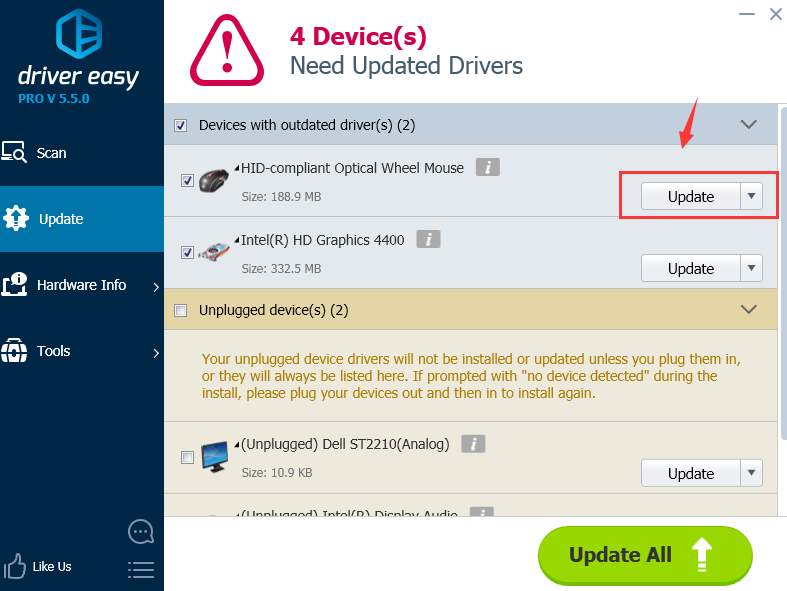Method 1: Check your USB port is working
Sometimes a USB port can just stop working when you upgrade to a new version of Windows. Usually it’s because of a driver problem. You should always check for this problem first.
Fortunately it’s easy to test: simply unplug the keyboard from the USB port and plug in another USB device – like a mouse or an external hard-drive. If that device doesn’t work either, the USB port itself is the problem, and you should skip straight to Method 4. If the device you just plugged in does work, then continue to Method 2.
Method 2: Adjust your keyboard settings
Windows has a setting, called Filter Keys, that allows you to control how it deals with accidental repeated keystrokes. Unfortunately, if turned on, this setting has been known to cause some keyboards to stop working in Windows 10. So you should check if it’s turned on. If it is, you should turn it off and see if that resolves the problem.
1) On your PC desktop, click the Action Center icon in the lower-right corner and click All settings.

2) Click Ease of Access.
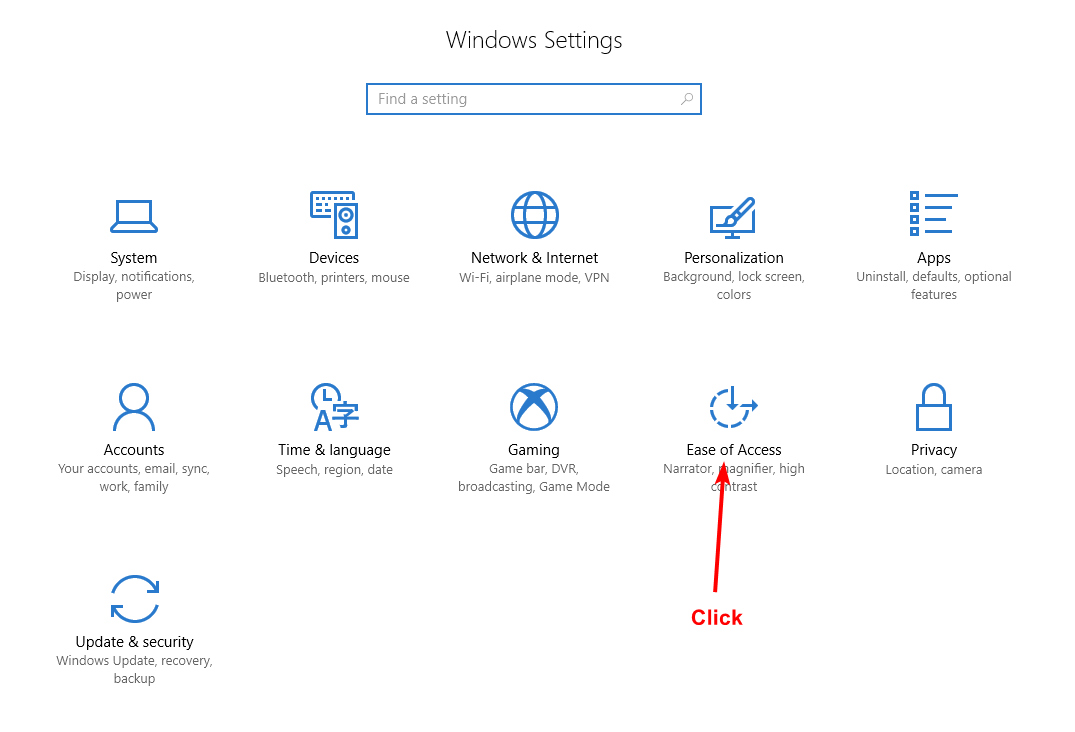
3) Click Keyboard.

4) Ensure Filter Keys is OFF, and close the window.
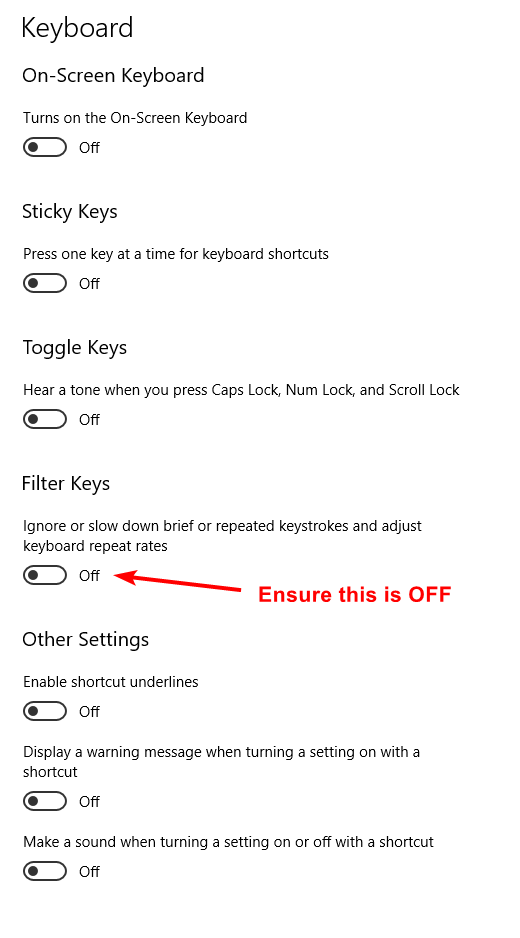
Method 3: Reinstall your keyboard driver
If your keyboard driver has developed a fault, your keyboard may stop working. To fix it:
1) Right-click the Start button, then click Device Manager.

2) Expand Keyboards then right-click Standard PS/2 Keyboard and click Uninstall.
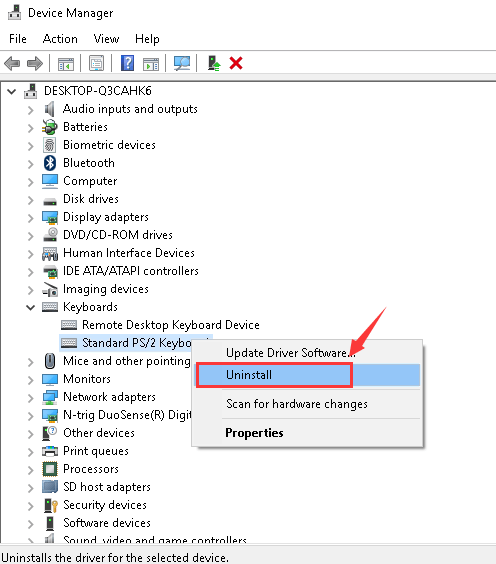
3) When prompted to confirm, click OK.

4) Restart your computer after the uninstall. If the problem persists, it’s likely that your driver is outdated, rather than faulty, and you should try Method 4 below.
Method 4: Update your keyboard and USB driver (recommended)
One of the most common causes of an unresponsive keyboard is an outdated keyboard or USB driver.
There are two ways you can get the right drivers for your keyboard and USB port: manually or automatically.
Manual driver update – You can update your drivers manually by going to the manufacturer’s website and searching for the most recent correct driver. Note that for your USB driver, you may need to try both the manufacturer of your PC and also the manufacturer of your USB port’s chip set. If you don’t have the time, patience or computer skills to update your drivers manually, you can, instead, do it automatically with Driver Easy.
Automatic driver update – Driver Easy will automatically recognize your system and find the correct drivers for both your mouse and your USB port. You don’t need to know exactly what system your computer is running or who all the manufacturers are, you don’t need to risk downloading and installing the wrong driver, and you don’t need to worry about making a mistake when installing. You can update your drivers automatically with either the FREE or the Pro version of Driver Easy. But with the Pro version it takes just 2 clicks (and you get full support and a 30-day money back guarantee):
1) Download and install Driver Easy.
2) Run Driver Easy and click Scan Now button. Driver Easy will then scan your computer and detect any problem drivers.
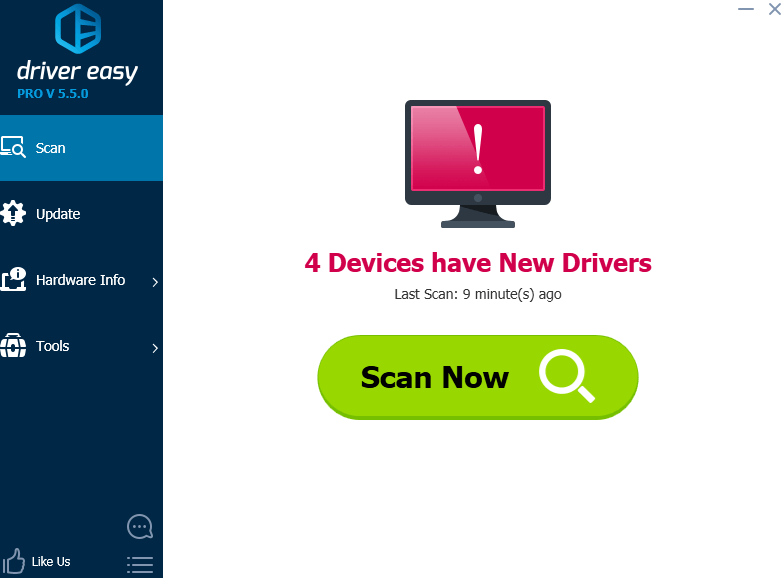
3) Click the Update button next to the flagged keyboard (or USB device) to automatically download and install the correct version of it (you can do this with the FREE version).
Or click Update All to automatically download and install the correct version of all the drivers that are missing or out of date on your system (this requires the Pro version – you’ll be prompted to upgrade when you click Update All).
